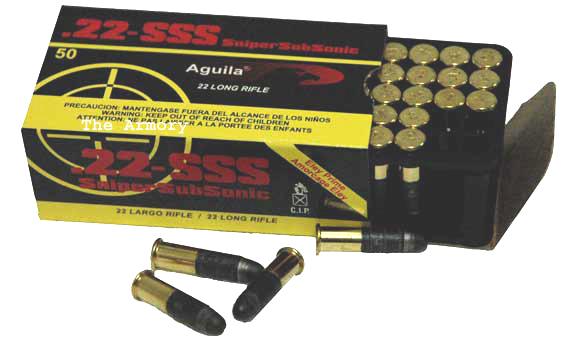 The .22 Long Rifle or .22 LR is a border fire pattern, known in Germany under the name LFB 5.6 mm (long fuer Buechsen).
The .22 Long Rifle or .22 LR is a border fire pattern, known in Germany under the name LFB 5.6 mm (long fuer Buechsen)..22 Short
Rat-shot .22
In 1857 introduced a Smith & Wesson revolver named First Model. This was carried out in a .22-caliber .22 Short that we would call. The pattern of the original cargo consisted of 4 grains (0.26 grams) fine black powder also known as gunpowder, and a slug of 29 grains (1.9 grams). The fine black powder was replaced in 1887 by the smoke-free nitro powder also known as B called witkruit or Poudre. Remington came in 1930 with the first High Velocity pattern (high-speed pattern) in this caliber. Since then, it's a very popular caliber in the Shooting. This is mainly due to the small recoil, the relatively soft explosion and the low price.
.22 Long
1871 came the .22 Long in the market. It was produced for the 7-Scottish Standard revolver from the company Great Western Gun Works from the United States. Long used the Remington .22 rifle from 1874 also as a pattern. The original charge of the .22 Long consisted of 5 grains (0.32 grams) black powder and a 29 grains (1.9 grams) slug. Until the Second World War was the .22 Long is not very popular with the militiamen. Especially in the field of hunting on small (harmful) game he was ousted by the 1887 on the market .22 Long Rifle.
.22 Long Rifle
In 1887 appeared the .22 Long Rifle commissioned the Stevens Arms & Tool Company on the market. The Peters Cartridge Company took this pattern as the first in production. The then load a .22 LR pattern was 5 grains (0.32 grams) black powder and a 40 grains (2.6 grams) iron ball. This caliber is the most popular pattern of all time and is mainly used to help hunt small game and in the shooting. The high-speed versions of this caliber are mainly used for hunting, but are also very suitable to shoot up to 75 meters.

 The round has rimfire percussion aimed for hunting small animals or sport shooting. It was created in the U.S., it is also almost always bears the U.S. standard unit (0.22 of an inch). Despite the fact that the charge can be considered to be outdated, is still extremely popular due to cheap manufacturing and the low cost and exceptional accuracy over shorter distances. It is used both in sport and training weapons.
The round has rimfire percussion aimed for hunting small animals or sport shooting. It was created in the U.S., it is also almost always bears the U.S. standard unit (0.22 of an inch). Despite the fact that the charge can be considered to be outdated, is still extremely popular due to cheap manufacturing and the low cost and exceptional accuracy over shorter distances. It is used both in sport and training weapons. Cartridge .22 LR (.22 Long Rifle) caliber 5.6 mm. was developed by . Stevens Arm & Tool Companyin 1887.
Cartridge .22 LR (.22 Long Rifle) caliber 5.6 mm. was developed by . Stevens Arm & Tool Companyin 1887. The .22 long rifle is a small-caliber pistol used mainly in target shooting.
The .22 long rifle is a small-caliber pistol used mainly in target shooting. The munition .22 Long Rifle is the most widespread round throughout the world. It has a percussion class ring (the composition is located in the rim of the cartridge) with 5.5 millimeters, appeared in 1887. It was directly called as .22 (or .22 Short) and .22 Long under the license of American Arms & Tool Company and manufactured by Peters (United States) for the manufacture of weapons as well Stevens nationality.
The munition .22 Long Rifle is the most widespread round throughout the world. It has a percussion class ring (the composition is located in the rim of the cartridge) with 5.5 millimeters, appeared in 1887. It was directly called as .22 (or .22 Short) and .22 Long under the license of American Arms & Tool Company and manufactured by Peters (United States) for the manufacture of weapons as well Stevens nationality.